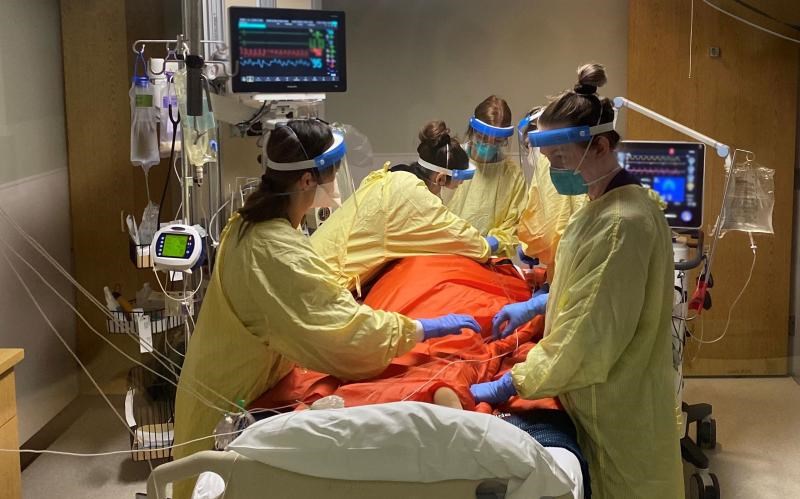REGINA — New modelling shared by the Saskatchewan Health Authority is predicting that COVID-19 patients will continue overcrowding ICUs into 2022, if the current trajectory isn’t interrupted by public health measures or behaviour changes from Sask. residents.
An emotional Dr. Saqib Shahab, chief medical health officer, presented the data during a press conference on Wednesday, highlighting the elevated concerns for the future.
He pleaded with individuals to make more efforts to limit mixing in public spaces, to follow mandates in place and to get vaccinated, with or without a public health order from government officials.
“What we do individually [right now] can change the trajectory,” said Shahab. “We’ve come so far and we just have to pull along for the next few months.”
He urged Sask. residents to keep their close contacts to just one household whenever possible, and to stay home when feeling sick.
Shahab said that while modelling isn’t necessarily a guaranteed prediction, the current data shows that hospitalizations could spike by December and peak at an unmanageable high in the new year, if no interventions are brought in.
Predictions showed that if behaviour in Saskatchewan doesn’t change, as many as 200 people or more could end up needing acute care by Jan. 1. More than 20,000 surgeries would be cancelled due to continued service slowdowns to prop up ICU capacity.
Shahab said that while cases are currently trending downward from the earlier peak of over 500 daily, the transmission rate is still too high to be considered a “safe place.”
Currently, a third of cases are in school-age children, said Shahab, with approximately 77 per cent of transmission linked to household or other community settings.
Forty per cent of hospitalizations are in individuals under the age of 50, and the majority of these cases are still in those who remain unvaccinated.
“Even a lower rate of hospitalizations to acute care and ICU will continue to put pressure on the acute care system,” said Shahab.
Vaccination delivery has also stalled, which causes concern, said Shahab. The rate of vaccination is increasing by approximately 1 per cent per day, which Shahab said is not fast enough to provide protection during the current fourth wave of transmission.
A large portion of the population remains unvaccinated, and older demographics are seeing instances of breakthrough infection, supporting the need for the booster program currently underway.
Shahab said that individuals need to practice caution when it comes to being in contact with others, especially when gathering vaccinated and unvaccinated people together.
“All the evidence is out there. It’s very distressing to see unvaccinated, young, healthy people ending up in ICU and dying,” said Shahab. “To see young lives lost to a vaccine preventable disease — how can we accept this?"
Shahab said that if transmission rates continue and vaccination rates don’t elevate, Saskatchewan ICUs will be seeing COVID-19 patients fill surge beds well into 2022.
Using the modelling data as a guide, Shahab said that intervention is badly needed — like gathering restrictions and continued adherence to social distancing, isolation and indoor masking orders.
Shahab could not say what recommendations he has made to provincial officials in regards to future public health orders — adding that only cabinet can decide to release that information.





